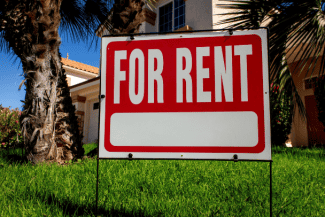How To Spot Homes For Sale With Investor Potential

Buying investment property that you rent to tenants can bring reliable cash flow … assuming you know how to spot homes for sale in Charleston, SC or Atlanta, GA with the best investment potential. If you’re ready to be a landlord, here are nine strategies to help you decide which house to buy.
1. Look in urban areas
You might long for peace and quiet, envisioning yourself listening to the soothing sounds of nature as you relax at home. But renters want to be where the action is. One big draw of renting is living near shopping, restaurants, and public transportation — amenities that typically make homes expensive to buy. Choose a location that renters will find convenient.
2. Choose a good school district
Many of your potential renters will be young families, and they usually care about the schools their children will attend. “School districts are key,” says Jed Bratt, a California real estate agent. “Many renters are often willing to pay more if a property is in a desirable school district.” Search Trulia Local to find out school ratings in various areas.
3. Check out the job market
When people have jobs, they can afford to set up their own households versus living in basement apartments or with roommates. So demand for rentals is higher in strong job markets. “Always buy in a market where there is a strong workforce and housing is needed,” says Joan Brothers, a New York, NY, real estate agent.
4. Pick more bedrooms
If you had the choice of buying an 1,800-square-foot house with four good-sized bedrooms or the same-sized house but with six small bedrooms, which would you choose for your investment property? If you chose the six-bedroom home, you would be correct. “A centrally located property with six small bedrooms in Washington, DC, will rent to a group of working professionals for $5,200 a month (each contributing $866), while a family of two adults and four kids would pay only $3,800 for [a similar home with four bedrooms],” says Lucas Hall, community manager at Cozy.co.
5. Choose low-maintenance landscaping
You might get a tenant who loves to garden and mow the lawn and will keep your yard pristine, but you can’t count on that. If you leave the responsibility of lawn care to your tenant, it might not get done. The other options, if your rental property has a large lawn, are for you to maintain it yourself or pay a landscaping company to do it. The first is time-consuming, the second, expensive. An investment property with low-maintenance landscaping is the way to go. Lucas Hall says to use “mulch, shrubs, and rockscaping.”
6. Set up a dream team
Your dream team consists of all the people who can help you. This includes a real estate agent who is familiar with investment property, general contractors, and a property management company (if you’ll be using one). When you have your team set up, “You can hit the ground running,” says Michael Park, president of Renters Warehouse Dallas. “Having your dream team assembled before you buy allows you to figure out how much it’s going to cost you on the front end to upgrade or update a house and set your budget accordingly,” says Park. “They’ll also help you spot if a possible investment is actually a money pit in disguise.”
7. Make sure you can rent
Imagine buying what you thought was the perfect rental home only to find you can’t rent it. Some zoning laws or homeowners’ associations restrict rentals. “Always do the proper due diligence to ensure that the property you’re considering falls into zoning that allows for the legal rental,” says Jordan Pryce Levitt, an agent with Douglas Elliman in New York.
8. Do the math (simplified)
If you’d rather clean your fridge than pull out a calculator, you’ll appreciate these simple methods to run the numbers. And the best part is that they’re a pretty accurate way to determine whether you’ll potentially make money on your investment property.
- The 1% rule: “If the rent is 1% of the sale price, it’s worth looking at,” says John Michael Grafft, a Chicago, IL, real estate agent. “If I can buy for $100,000 and rent at $1,000, it’s worth looking into further.”
- The 50% rule: “You want a mortgage payment (not including taxes and insurance) to be less than 50% of the rent,” says Trevor Ewen, a personal finance and investment blogger. “Otherwise, you are slated to make little to no money over the long term.”
Find out what nearby owners are asking for rent by checking Trulia rentals. “Filter by square footage and the number of bedrooms in your neighborhood to give you a rough estimate of what similar units are hoping to rent for,” says Lucas Hall.
9. Do the math (using formulas)
If you like math and want to plug in some numbers for more accurate ways to determine whether you’ll make money, figure out your cash flow first. You simply subtract your expenses from your income. Sounds simple, but you first need to know what your expenses will be.
Your total income will typically be your monthly rent multiplied by 12.
Expenses vary, but here’s a general list to go by:
- Mortgage payment
- Property taxes
- Homeowners’ insurance
- Property management, optional (figure 8% to 12% of monthly rent)
- Homeowners’ association fee
- Vacancy rate (figure 10% of monthly rent)
- Repairs (figure 5% of monthly rent)
Add up all these monthly expenses (if some are yearly, such as property taxes, divide by 12 to get the monthly amount). Subtract the amount of monthly expenses from your monthly income to determine whether you’ll have a positive cash flow.
Another important figure is the cap rate, which is the annual return you can expect to get after expenses. You arrive at this figure by dividing your net annual income (income minus expenses), excluding your mortgage payment, by the home’s purchase price. Let’s say your net income is $12,000 and the house cost you $170,000. Dividing 12,000 by 170,000 gives you a 7% cap rate. Anything over 5% is good.
Source: trulia.com















 Accessibility
Accessibility